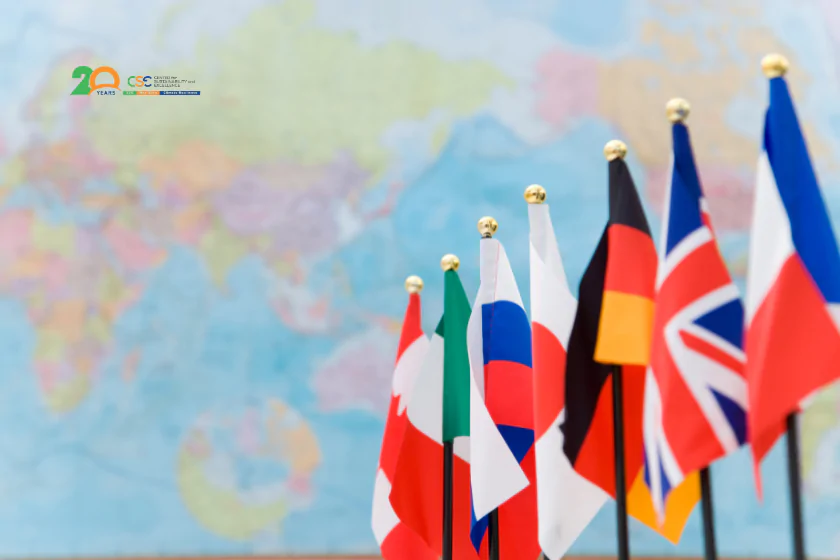From June 15 to 17, global leaders met in Kananaskis, Alberta. This was the 50th G7 Summit. More importantly, it came at a time of rising global instability. Geopolitical tensions are growing. So are economic risks and climate crises.
Therefore, this summit is not just tradition. It’s a test of the G7’s commitment to a fair, green, and secure future.
A Milestone for Canada—and Carney’s Vision
This is Canadian Prime Minister Mark Carney’s first major global summit. He faces a complex landscape. The original agenda focused on trade and economic security. However, current crises have shifted attention.
Even so, Canada is staying focused. It aims to lead with climate resilience, AI innovation, and critical minerals.
Unlike past G7 meetings, there’s no joint communique. Instead, Carney introduced six focused statements. This change signals a new G7 style—more practical, faster, and ready for global risks.
Wildfires as a Global Wake-Up Call
Climate change feels abstract—until it’s not. In Canada, wildfires have made it real. The 2023 season broke records. Now, in 2025, another brutal season looms.
Smoke from these fires has even reached Europe. That’s a powerful image for G7 leaders gathering in Alberta’s forests.
Carney chose to spotlight this threat. His goal? To push for stronger action on climate disasters.
As a result, leaders are expected to back new strategies. These include better emergency response, cross-border coordination, and forest resilience.
The Critical Minerals Imperative
Clean energy depends on minerals like lithium and cobalt. These are used in batteries, wind turbines, and solar panels.
Canada has rich reserves of these critical materials. Thus, it has a key role to play.
During the summit, leaders discussed secure and ethical sourcing. They want to build transparent, circular supply chains.
This matters. Without minerals, there is no green transition. For sustainability professionals, this highlights a shift. ESG is now about resource security and innovation—not just emissions.
AI as a Climate Ally
AI is often seen as a disruptor. However, Canada wants to reframe it—as a force for good.
Carney is proposing a balanced governance model. One that links U.S. innovation with EU regulation.
Moreover, Canada wants AI to help fight climate change. It could model wildfires. It could improve energy systems. And it could track environmental risks faster than humans.
The G7’s decisions on AI could shape tech policy for years. It’s a chance to use smart tools for a greener future.
Strategic Soft Power and the ESG Agenda
The G7’s global economic share is shrinking. New powers like BRICS are rising. In response, Canada is using soft power. It’s promoting climate action and fair innovation.
This is not just symbolism. It’s smart strategy. It shows that sustainability is central to global leadership.
At CSE (Center for Sustainability and Excellence), we see this shift clearly. ESG is no longer optional. It is shaping trade, policy, and global cooperation.
Final Takeaway
The Kananaskis G7 Summit is more than a diplomatic event. It’s a blueprint for how nations tackle shared threats.
Wildfires, supply chain risks, and digital disruption demand collective solutions. Canada is showing what bold, climate-first leadership can look like.
At CSE, we are proud to support this mission. Through our training, certifications, and advisory services, we help organizations lead in ESG.
Want to strengthen your sustainability impact?
👉 Explore the Certified Sustainability (ESG) Practitioner Program – Cohort 2
👉 Discover our online courses at the Sustainability Academy







